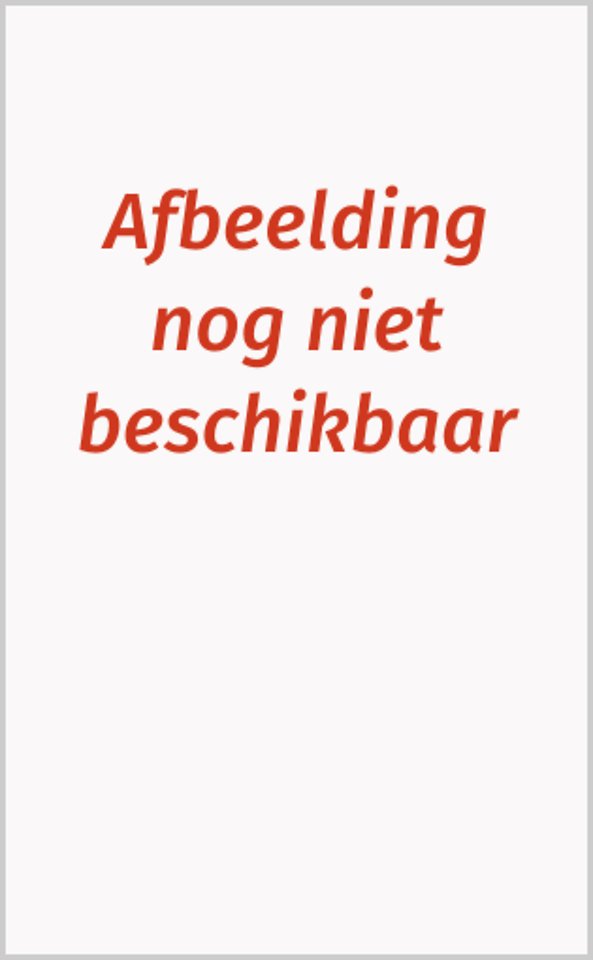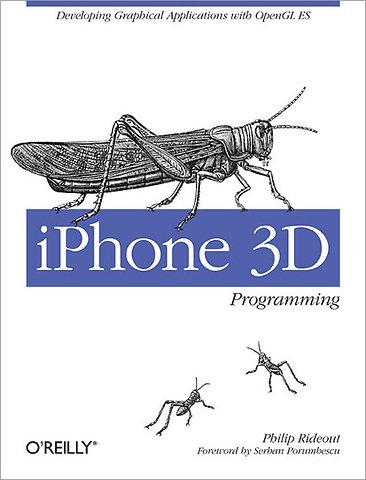iPhone 3D Programming
Paperback Engels 2010 9780596804824Samenvatting
What does it take to build an iPhone app with stunning 3D graphics This book will show you how to apply OpenGL graphics programming techniques to any device running the iPhone OS -- including the iPad and iPod Touch -- with no iPhone development or 3D graphics experience required. iPhone 3D Programming provides clear step-by-step instructions, as well as lots of practical advice, for using the iPhone SDK and OpenGL.
You'll build several graphics programs -- progressing from simple to more complex examples -- that focus on lighting, textures, blending, augmented reality, optimization for performance and speed, and much more. All you need to get started is a solid understanding of C++ and a great idea for an app.Learn fundamental graphics concepts, including transformation matrices, quaternions, and moreGet set up for iPhone development with the Xcode environmentBecome familiar with versions 1.1 and 2.0 of the OpenGL ES API, and learn to use vertex buffer objects, lighting, texturing, and shadersUse the iPhone's touch screen, compass, and accelerometer to build interactivity into graphics applicationsBuild iPhone graphics applications such as a 3D wireframe viewer, a simple augmented reality application, a spring system simulation, and more
This book received valuable community input through O'Reilly's Open Feedback Publishing System (OFPS). Learn more at http://labs.oreilly.com/ofps.html.
Specificaties
Lezersrecensies
Inhoudsopgave
Preface;
How to Read This Book;
Conventions Used in This Book;
Using Code Examples;
Safari® Books Online;
How to Contact Us;
Acknowledgments;
Chapter 1: Quick-Start Guide;
1.1 Transitioning to Apple Technology;
1.2 A Brief History of OpenGL ES;
1.3 Choosing the Appropriate Version of OpenGL ES;
1.4 Getting Started;
1.5 HelloArrow with Fixed Function;
1.6 HelloArrow with Shaders;
1.7 Wrapping Up;
Chapter 2: Math and Metaphors;
2.1 The Assembly Line Metaphor;
2.2 Assembling Primitives from Vertices;
2.3 Associating Properties with Vertices;
2.4 The Life of a Vertex;
2.5 The Photography Metaphor;
2.6 Saving and Restoring Transforms with Matrix Stacks;
2.7 Animation;
2.8 Vector Beautification with C++;
2.9 HelloCone with Fixed Function;
2.10 HelloCone with Shaders;
2.11 Wrapping Up;
Chapter 3: Vertices and Touch Points;
3.1 Reading the Touchscreen;
3.2 Saving Memory with Vertex Indexing;
3.3 Boosting Performance with Vertex Buffer Objects;
3.4 Creating a Wireframe Viewer;
3.5 Wrapping Up;
Chapter 4: Adding Depth and Realism;
4.1 Examining the Depth Buffer;
4.2 Creating and Using the Depth Buffer;
4.3 Filling the Wireframe with Triangles;
4.4 Surface Normals;
4.5 Lighting Up;
4.6 Shaders Demystified;
4.7 Adding Shaders to ModelViewer;
4.8 Better Wireframes Using Polygon Offset;
4.9 Loading Geometry from OBJ Files;
4.10 Wrapping Up;
Chapter 5: Textures and Image Capture;
5.1 Adding Textures to ModelViewer;
5.2 Texture Coordinates Revisited;
5.3 Fight Aliasing with Filtering;
5.4 Texture Formats and Types;
5.5 Texture Compression with PVRTC;
5.6 The PowerVR SDK and Low-Precision Textures;
5.7 Generating and Transforming OpenGL Textures with Quartz;
5.8 Dealing with Size Constraints;
5.9 Creating Textures with the Camera;
5.10 Wrapping Up;
Chapter 6: Blending and Augmented Reality;
6.1 Blending Recipe;
6.2 Wrangle Premultiplied Alpha;
6.3 Blending Caveats;
6.4 Blending Extensions and Their Uses;
6.5 Shifting Texture Color with Per-Vertex Color;
6.6 Poor Man’s Reflection with the Stencil Buffer;
6.7 Stencil Alternatives for Older iPhones;
6.8 Anti-Aliasing Tricks with Offscreen FBOs;
6.9 Rendering Anti-Aliased Lines with Textures;
6.10 Holodeck Sample;
6.11 Wrapping Up;
Chapter 7: Sprites and Text;
7.1 Text Rendering 101: Drawing an FPS Counter;
7.2 Simplify with glDrawTexOES;
7.3 Crisper Text with Distance Fields;
7.4 Animation with Sprite Sheets;
7.5 Image Composition and a Taste of Multitexturing;
7.6 Mixing OpenGL ES and UIKit;
7.7 Rendering Confetti, Fireworks, and More: Point Sprites;
7.8 Chapter Finale: SpringyStars;
7.9 Wrapping Up;
Chapter 8: Advanced Lighting and Texturing;
8.1 Texture Environments under OpenGL ES 1.1;
8.2 Bump Mapping and DOT3 Lighting;
8.3 Reflections with Cube Maps;
8.4 Anisotropic Filtering: Textures on Steroids;
8.5 Image-Processing Example: Bloom;
8.6 Wrapping Up;
Chapter 9: Optimizing;
9.1 Instruments;
9.2 Understand the CPU/GPU Split;
9.3 Vertex Submission: Above and Beyond VBOs;
9.4 Lighting Optimizations;
9.5 Texturing Optimizations;
9.6 Culling and Clipping;
9.7 Shader Performance;
9.8 Optimizing Animation with Vertex Skinning;
9.9 Further Reading;
C++ Vector Library;
Disclaimer Regarding Performance;
Vector.hpp;
Matrix.hpp;
Quaternion.hpp;
Colophon;
Rubrieken
- advisering
- algemeen management
- coaching en trainen
- communicatie en media
- economie
- financieel management
- inkoop en logistiek
- internet en social media
- it-management / ict
- juridisch
- leiderschap
- marketing
- mens en maatschappij
- non-profit
- ondernemen
- organisatiekunde
- personal finance
- personeelsmanagement
- persoonlijke effectiviteit
- projectmanagement
- psychologie
- reclame en verkoop
- strategisch management
- verandermanagement
- werk en loopbaan

